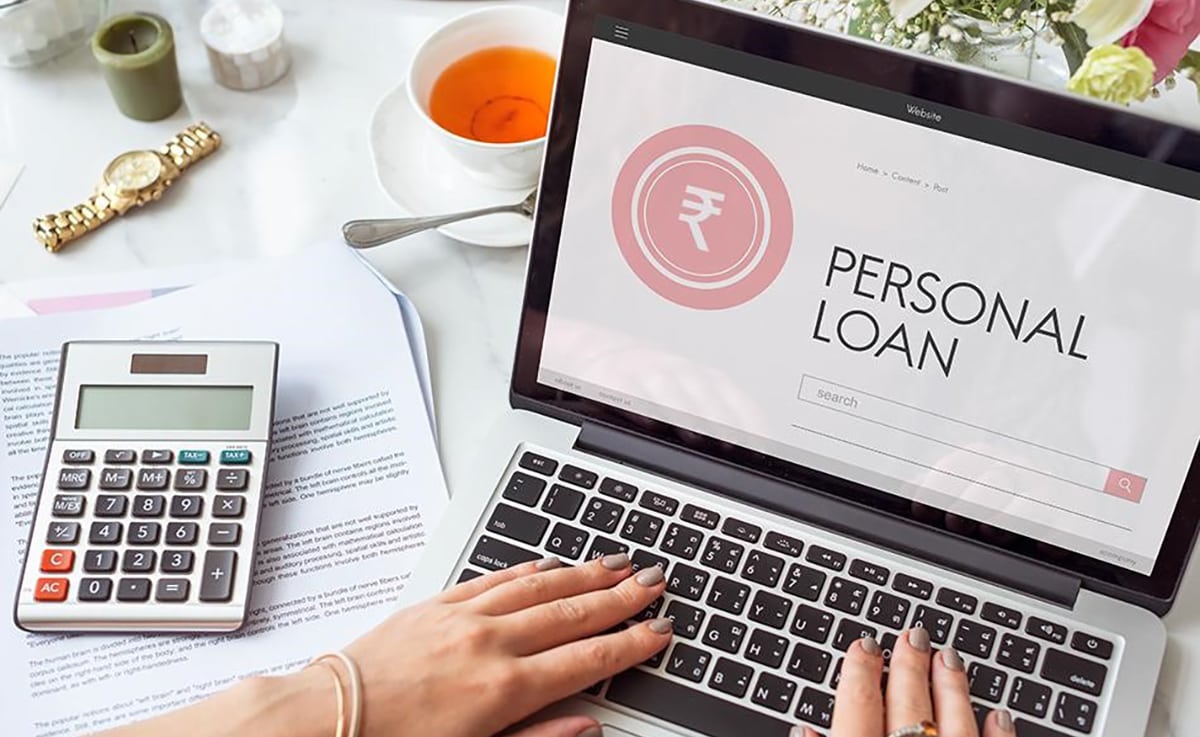Applying for a personal loan can be a smart financial move when used for the right reasons. Whether you need funds for an emergency, debt consolidation, a wedding, or even a dream vacation, understanding the ins and outs of personal loans is crucial. Before you dive in, knowing what to expect, how to qualify, and what red flags to watch out for can save you from financial strain later. This comprehensive guide will help you make an informed decision before signing any loan agreement.
Key Takeaways
- Check your credit score before applying.
- Compare multiple lenders to get the best terms.
- Understand all costs beyond just the interest rate.
- Borrow within your repayment capacity.
- Use personal loans wisely—only for genuine needs.
- Avoid applying to multiple lenders at once.
- Always read the fine print.
Understanding What a Personal Loan Is
A personal loan is an unsecured loan provided by banks, credit unions, or online lenders that you repay in fixed monthly installments over a predetermined period. Unlike home or auto loans, it doesn’t require collateral, meaning your assets aren’t at risk. Because of this, interest rates may be higher depending on your credit profile.
Key Features:
- Loan Amount: Usually ranges from $1,000 to $100,000.
- Tenure: Typically 1 to 7 years.
- Interest Rate: Fixed or variable, depending on the lender and your creditworthiness.
- Purpose: Versatile — can be used for nearly any personal expense.
Benefits of a Personal Loan
Before you apply, it’s important to understand why personal loans are so popular:
- No Collateral Needed: Safe for those without major assets.
- Fixed Monthly Payments: Predictable budgeting.
- Quick Disbursal: Many lenders offer same-day or next-day approval and funding.
- Debt Consolidation: Streamline multiple debts into one payment.
- Improves Credit Mix: A different form of credit can boost your score when used responsibly.
Check Your Credit Score First
Your credit score is a major determinant in whether your loan gets approved and what interest rate you’ll pay. A high credit score (700+) gives you better bargaining power and access to lower interest rates.
What to Do:
- Get your credit report from credit bureaus (like CIBIL, Experian, Equifax).
- Check for errors and get them corrected.
- Improve your score before applying if needed.
Understand the True Cost of the Loan
The interest rate is just the tip of the iceberg. Personal loans may come with hidden charges like:
- Processing fees
- Prepayment/Foreclosure penalties
- Late payment charges
- GST and other taxes
Tip:
Always ask for the Annual Percentage Rate (APR), which reflects the true yearly cost of the loan, including fees.
Evaluate Your Repayment Capacity
Borrowing more than you can repay can lead to a debt trap. Calculate your monthly income, existing liabilities, and other fixed expenses before deciding on the loan amount.
Use Loan Calculators:
Most bank websites offer EMI calculators that help you figure out what your monthly obligation will be.
Compare Lenders Before You Commit
Do not settle for the first offer. Different lenders offer different terms based on your credit score, income level, and relationship with the institution.
Things to Compare:
- Interest rate
- Processing fees
- Customer reviews
- Disbursal speed
- Flexibility in repayment
Read the Fine Print Carefully
Loan agreements often come with dense legal language. It’s vital to read every clause before signing. Look out for:
- Clause on prepayment
- Grace period
- Default consequences
- Floating vs fixed interest rates
Tip:
Ask questions if anything is unclear. Don’t be afraid to walk away if something doesn’t sit right.
Avoid Multiple Applications at Once
Submitting too many loan applications can negatively affect your credit score. Every lender makes a hard inquiry, and too many of these can make you look credit-hungry.
Solution:
Use aggregator platforms to check eligibility without affecting your credit score.
Know When a Personal Loan Is (and Isn’t) a Good Idea

Good Uses:
- Emergency medical expenses
- Consolidating high-interest debts
- Major life events (marriage, travel, etc.)
Avoid for:
- Investing in risky assets like stock trading
- Funding luxury items beyond your budget
- Paying off other unsecured loans if the problem is overspending
Is a Personal Loan the Right Choice for Debt Consolidation?
Description:
This article explores how personal loans can be used to consolidate high-interest debts like credit cards and payday loans. It would compare the benefits (lower interest rates, single EMI) with risks (fees, credit impact). You can include real-life examples, debt snowball vs avalanche methods, and tips for choosing the right loan provider.
How Do You Improve Your Chances of Getting Approved for a Personal Loan?
Description:
Ideal for people with average or poor credit scores, this article would cover actionable strategies like improving your credit utilization ratio, increasing income proof, adding a co-borrower, and choosing lenders that cater to your credit profile. Include sections on prequalification, soft checks, and financial readiness.
What Are the Hidden Charges in Personal Loans You Should Watch For?
Description:
This guide helps readers go beyond just interest rates to understand the full cost of borrowing. It will break down fees such as processing charges, prepayment penalties, insurance bundling, service taxes, and late payment charges. Provide examples to show how these impact the final loan cost.
How Can You Use a Personal Loan to Improve Your Credit Score?
Description:
This topic covers how responsible use of personal loans (timely EMI payments, improving credit mix) can help rebuild or enhance your credit score. It should also warn about what not to do (missed payments, overborrowing) and include a timeline for score improvement.
Are Online Personal Loan Apps Safe to Use in 2025?
Description:
Given the rise of fintech and lending apps, this article will compare the pros and cons of online loan apps versus traditional banks. Include tips for choosing a secure platform, red flags to avoid scams, data privacy issues, and the importance of reading app permissions.
Should You Choose a Fixed or Floating Interest Rate on Your Personal Loan?
Description:
This topic explores how interest rate types impact your overall repayment amount. Break down how fixed rates offer stability and how floating rates can save money if interest rates drop. Include real-life scenarios where one may be better than the other.
What Are the Top Mistakes to Avoid When Taking a Personal Loan?
Description:
This post will highlight common borrower errors such as borrowing more than needed, not comparing lenders, ignoring the fine print, skipping credit reports, or missing EMIs. Each mistake can be paired with a solution to make it an educational piece.
What Are the Best Alternatives to a Personal Loan for Quick Cash?
Description:
Here you can discuss alternatives such as credit cards, salary advances, P2P lending, borrowing against FD or insurance, and gold loans. Help readers understand when a personal loan is the better or worse option and how to compare the total cost of borrowing.
How to Calculate Your Ideal Personal Loan EMI Without Risking Your Budget?
Description:
This article teaches users how to use EMI calculators, understand DTI (Debt-to-Income ratio), and budget planning to avoid future stress. Provide downloadable templates or calculator tools. Offer guidance for both salaried and self-employed individuals.
How Do Banks and NBFCs Evaluate Personal Loan Applications?
Description:
A behind-the-scenes guide to the lending process. Cover what underwriters look for — credit history, job stability, income verification, existing debt, and banking behavior. Help readers prepare better documentation and anticipate approval criteria.
How Much Personal Loan Can You Actually Afford Without Risking Your Finances?
Description:
This article will guide readers through calculating a safe loan amount based on their monthly income, existing debt, and financial goals. Include the 50/30/20 budgeting rule, debt-to-income ratio standards, and real-world examples. Help readers avoid taking on more than they can handle and explain what lenders consider affordable.
What Documents Do You Need for a Personal Loan Application?
Description:
Cover a comprehensive list of documents for salaried, self-employed, and business applicants. Include identification proof, income proof (salary slips, IT returns), address proof, and bank statements. Explain how complete documentation speeds up approval and increases loan eligibility.
Is It Better to Take a Personal Loan or Use a Credit Card for Emergencies?
Description:
Compare these two popular credit options based on interest rates, flexibility, repayment structure, fees, and long-term impact on credit. Offer use-case examples like medical bills, travel, or appliances. Help readers decide which option suits their needs, with decision charts or scenarios.
What’s the Difference Between Secured and Unsecured Personal Loans?
Description:
Explore the key differences, including risk to the borrower, interest rates, approval requirements, and ideal use cases. Include examples like loans against property, gold, or fixed deposits. Educate readers on when to choose secured loans for larger amounts or better rates.
What Happens If You Default on a Personal Loan?
Description:
This crucial article discusses the legal and financial consequences of missing EMIs or full default. Include steps taken by lenders (calls, notices, legal action), credit score damage, impact on future borrowing, and possible loan restructuring options. Provide prevention tips and debt management advice.
Are Joint Personal Loans a Smart Way to Increase Loan Eligibility?
Description:
Explain how co-borrowers (like spouses or family members) can help improve loan approval chances, get higher amounts, or lower interest rates. Discuss the responsibilities, risks, and what happens if one person defaults. Ideal for couples or family financial planning.
Can You Take a Personal Loan for Education, Travel, or a Wedding?

Description:
Break down the versatility of personal loans for lifestyle or aspirational purposes. Explain how such loans work compared to specific financing (like education or travel loans). Offer budgeting tips, planning timelines, and advice on avoiding unnecessary borrowing.
How to Refinance or Transfer Your Personal Loan to Save on Interest
Description:
Teach readers how to switch their loan to another lender for a better rate. Cover the refinancing process, balance transfer offers, fees involved, ideal timing (after 6–12 EMIs), and potential savings. Add a checklist and case studies to show impact.
What Are Pre-Approved Personal Loans and Should You Accept One?
Description:
Many banks offer pre-approved loans to existing customers — but are they always a good deal? This post will explain how these offers work, how banks determine eligibility, and what hidden terms may apply. Advise readers on when to accept and when to negotiate or decline.
What Is the Role of CIBIL or Credit Score in Your Personal Loan Approval?
Description:
Focus on credit scores in detail: what is a CIBIL score, how is it calculated, what score range is ideal for a personal loan, and how it affects interest rates. Provide ways to boost credit scores quickly before applying and how to fix errors on credit reports.
Can Personal Loans Be Used to Build Emergency Funds or Is It a Trap?
Description:
This article examines the idea of using personal loans to create or supplement an emergency fund — a controversial topic. Discuss the pros (quick cash in times of need) and cons (debt accumulation, interest burden). Offer smarter alternatives and financial planning strategies for real emergencies.
How Do Personal Loan Interest Rates Differ Based on Income and Employment Type?
Description:
Explore how lenders treat salaried employees, freelancers, business owners, and contract workers differently when offering loans. Include how stable income affects approval, interest rate differences, and tips to improve your profile regardless of your job type.
What’s the Ideal Tenure for a Personal Loan: Short-Term or Long-Term?
Description:
Help readers decide between shorter tenures (higher EMIs, less interest paid) and longer tenures (lower EMIs, more interest paid). Provide examples, EMI vs total interest charts, and calculators. Offer decision frameworks based on income, age, and loan purpose.
Can You Get a Personal Loan Without a Bank Account or Credit History?
Description:
Target new earners, students, and people without formal banking history. Discuss no-credit-history lenders, P2P platforms, microloans, and fintech apps. Warn about predatory lenders and provide tips to start building a credit file for future eligibility.
How Safe Is It to Share Your Financial Data with Loan Aggregators or Apps?
Description:
Focus on privacy and cybersecurity. Educate readers about data-sharing practices on platforms like LoanTap, BankBazaar, etc. Discuss what permissions are safe, how to read app terms and conditions, and red flags for scams or phishing attempts.
Should You Top-Up an Existing Personal Loan or Apply for a New One?
Description:
Compare the pros and cons of loan top-ups versus taking a fresh personal loan. Include eligibility criteria, documentation differences, cost implications, and case studies showing the savings or risks in both options.
How to Get a Personal Loan When You’re Self-Employed or Freelancing?
Description:
A guide tailored for freelancers and entrepreneurs with variable income. Provide tips on maintaining income proof (ITRs, bank statements), improving financial discipline, and choosing lenders who cater to non-traditional profiles.
What Are the Latest Trends in Personal Loans in 2025?
Description:
Offer readers a look at evolving trends: digital-only lending, AI-based risk assessments, instant disbursement via UPI, flexible EMIs, or BNPL-style personal loans. Add expert quotes or statistics to make the content future-ready and insightful.
Can You Negotiate Better Terms on Your Personal Loan
Description:
Many borrowers don’t realize they can negotiate terms. Teach readers how to request better rates, waive fees, or ask for flexible repayment. Include communication tips, timing (like pre-approval or end of the financial quarter), and leveraging credit score improvements.
What Happens to Your Personal Loan If You Lose Your Job or Income?
Description:
This emotional yet practical article would explore the financial and legal implications of unemployment on loan repayments. Include options like moratoriums, restructuring, using emergency funds, and how to communicate with lenders early. Add sections on insurance options for such events.
How Do Seasonal Offers and Festive Deals Affect Personal Loan Costs?
Description:
Explore how banks and NBFCs offer lower interest rates, zero processing fees, or cashback deals during Diwali, Christmas, and year-end. Help readers evaluate if these offers are truly beneficial or just marketing gimmicks. Include tips to compare festival-season offers smartly.
Can a Personal Loan Help You Fund a Startup or Small Business Idea?
Description:
This article explains how a personal loan can serve as seed funding for early-stage ventures. Discuss pros (no collateral, fast disbursal) and cons (high interest, personal liability). Include use cases for small-scale entrepreneurs and when business loans might be a better fit.
What Should You Know About Personal Loan Insurance and Is It Worth It?
Description:
Many lenders bundle insurance policies with personal loans. Discuss types of coverage (life, unemployment, disability), their cost, benefits, and whether they’re mandatory or optional. Help readers make informed decisions about opting in or declining.
How Do Personal Loans Affect Your Credit Utilization Ratio?
Description:
Dive deep into how a personal loan interacts with a borrower’s overall credit profile — specifically how it may reduce credit card dependency and improve or worsen the credit utilization ratio. Use visual graphs or calculators for better understanding.
What Are the Best Apps and Websites to Compare Personal Loan Offers in Real-Time?
Description:
Guide readers through top loan aggregators and platforms like Paisabazaar, BankBazaar, Cred, and others. Rate each based on user interface, number of partner lenders, ease of documentation, and hidden charges. Include comparison tables or a checklist.
Can You Get a Personal Loan with a Guarantor Instead of a Cosigner?
Description:
Clarify the difference between guarantors and co-signers. Discuss when you might need one, who qualifies, and the legal responsibilities involved. This topic is ideal for borrowers with weak credit or no income proof.
How to Repay a Personal Loan Faster Without Penalty?
Description:
Teach strategies for early repayment — bi-weekly payments, rounding up EMIs, annual bonuses, or side hustles. Explain how to check for prepayment charges, negotiate with lenders, and the financial benefits of saving on interest.
Is It Smart to Take a Personal Loan to Invest in Stocks, Crypto, or Mutual Funds?
Description:
Address a trending but risky practice. Highlight the dangers of using borrowed money for volatile investments. Compare potential gains vs guaranteed interest costs. Educate on risk tolerance and safer alternatives like SIPs or systematic investments.
What Are the Tax Implications of Taking and Repaying a Personal Loan?
Description:
Many people don’t realize how personal loans affect taxes. Explain situations where interest may be deductible (if used for business, property renovation, etc.). Also, clarify how loan amounts aren’t considered income and how defaults may impact tax filings.
Can a Personal Loan Help You Escape the Debt Trap — or Make It Worse?
Description:
Explore both sides of using Personal loans to manage overwhelming debt. Share examples where it helped consolidate and save money, and cases where it added to the burden. Offer financial planning strategies, tools, and expert advice to navigate debt safely.
Also read : How Much Home Loan Can You Actually Afford?
Conclusion
A personal loan can be a valuable tool if used wisely and for the right reasons. However, it’s not “free money.” Taking time to understand the full scope of the loan agreement, evaluating your repayment ability, and comparing various options can help you make a smart, financially sound decision. Don’t rush—do your homework, ask questions, and proceed only when you’re confident.
FAQs
Can I get a personal loan with a low credit score? Yes, but expect higher interest rates. Some lenders specialize in poor-credit loans, but they come at a cost.
How long does it take to get a personal loan? Some lenders approve within minutes and disburse within 24–48 hours.
Is it better to take a loan from a bank or an online lender? Banks are more secure and may offer better rates if you have a relationship with them. Online lenders are faster but may charge more.
Can I repay the loan early? Yes, but some lenders charge prepayment penalties. Always confirm the terms in advance.
What is the maximum amount I can borrow? This depends on your income, credit score, and the lender’s policies. Salaried individuals may get up to 10–20 times their monthly income.
Will a personal loan affect my credit score? Yes. Timely repayment improves it; defaulting harms it.
What happens if I miss an EMI? Missing an EMI attracts penalties and negatively impacts your credit score. Communicate with your lender to avoid long-term damage.



